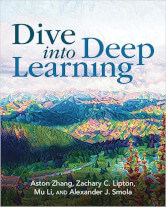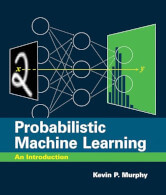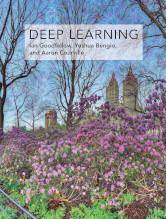Let’s clear up one potential source of confusion at the outset. What’s the difference between Machine Learning and Deep Learning? The two terms mean different things.
In essence, Machine Learning is the practice of using algorithms to parse data, learn insights from that data, and then make a determination or prediction. The machine is ‘trained’ using huge amounts of data.
Deep Learning is a subset of Machine Learning that uses multi-layers artificial neural networks to deliver state-of-the-art accuracy in tasks such as object detection, speech recognition, language translation and others. Think of Machine Learning as cutting-edge, and Deep Learning as the cutting-edge of the cutting-edge.
Deep learning has revolutionized pattern recognition, introducing tools that power a wide range of technologies in such diverse fields as computer vision, natural language processing, and automatic speech recognition. Applying deep learning requires you to simultaneously understand how to cast a problem, the basic mathematics of modeling, the algorithms for fitting your models to data, and the engineering techniques to implement it all.
This roundup picks some useful books to learn about Deep Learning. The books are free to read. The article is divided into 2 pages.
1. The Little Book of Deep Learning by François Fleuret

Although the bulk of deep learning is not difficult to understand, it combines diverse components such as linear algebra, calculus, probabilities, optimization, signal processing, programming, algorithmics, and high-performance computing, making it complicated to learn.
Instead of trying to be exhaustive, this little book is limited to the background necessary to understand a few important models
François Fleuret is a professor of computer science at the University of Geneva, Switzerland.
2. Dive into Deep Learning by Aston Zhang, Zachary C. Lipton, Mu Li, Alexander J. Smola
 This book is a comprehensive resource that makes deep learning approachable, while still providing sufficient technical depth to enable engineers, scientists, and students to use deep learning in their own work.
This book is a comprehensive resource that makes deep learning approachable, while still providing sufficient technical depth to enable engineers, scientists, and students to use deep learning in their own work.
No previous background in machine learning or deep learning is required―every concept is explained from scratch and the appendix provides a refresher on the mathematics needed. Runnable code is featured throughout, allowing you to develop your own intuition by putting key ideas into practice.
3. Probabilistic Machine Learning: An Introduction by Kevin Patrick Murphy
 This book offers a detailed and up-to-date introduction to machine learning (including deep learning) through the unifying lens of probabilistic modeling and Bayesian decision theory.
This book offers a detailed and up-to-date introduction to machine learning (including deep learning) through the unifying lens of probabilistic modeling and Bayesian decision theory.
The book covers mathematical background (including linear algebra and optimization), basic supervised learning (including linear and logistic regression and deep neural networks), as well as more advanced topics (including transfer learning and unsupervised learning). End-of-chapter exercises allow students to apply what they have learned, and an appendix covers notation.
4. Deep Learning by Ian Goodfellow, Yoshua Bengio and Aaron Courville
 The Deep Learning textbook is a resource intended to help students and practitioners enter the field of machine learning in general and deep learning in particular. The online version of the book is now complete and will remain available online for free.
The Deep Learning textbook is a resource intended to help students and practitioners enter the field of machine learning in general and deep learning in particular. The online version of the book is now complete and will remain available online for free.
The text offers mathematical and conceptual background, covering relevant concepts in linear algebra, probability theory and information theory, numerical computation, and machine learning. It describes deep learning techniques used by practitioners in industry, including deep feedforward networks, regularization, optimization algorithms, convolutional networks, sequence modeling, and practical methodology; and it surveys such applications as natural language processing, speech recognition, computer vision, online recommendation systems, bioinformatics, and videogames. Finally, the book offers research perspectives, covering such theoretical topics as linear factor models, autoencoders, representation learning, structured probabilistic models, Monte Carlo methods, the partition function, approximate inference, and deep generative models.
Pages in this article:
Page 1: The Little Book of Deep Learning and more books
Page 2: Deep Learning on Graphs and more books
